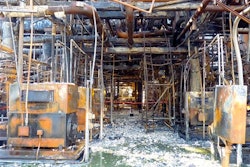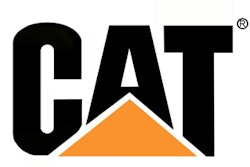 Medicines made from potent and toxic compounds may be beneficial for consumers once they are manufactured, packaged and properly dosed, but the compounds are typically hazardous during earlier production stages. Proper containment can keep workers safe, protect the environment and prevent cross-contamination.
Medicines made from potent and toxic compounds may be beneficial for consumers once they are manufactured, packaged and properly dosed, but the compounds are typically hazardous during earlier production stages. Proper containment can keep workers safe, protect the environment and prevent cross-contamination.
When it comes to containment, manufacturers don’t ask “why?” but rather, “how?” A wide variety of options are available, and manufacturers must choose the right system while adhering to new industry guidelines. To find out more about industry guidelines, the benefits and drawbacks of current containment trends and the potential shape of things to come, Pharmaceutical Processing spoke with providers of pharmaceutical containment systems.
The Nuts & Bolts
Containment can consist of many elements. One aspect of confusion in the industry can be the distinction between barriers systems and isolator systems: Barriers and isolators are not the same, “although current containment language uses the two terms with little distinction,” explains Scott Patterson, Vice President of Commercial Sales at ILC Dover LP. “A barrier is meant to create physical separation between the process and the operators,” whereas “an isolator is to provide total isolation of the process.”
Patterson observes that the industry’s perspective on proper containment, including preferred containment equipment, has evolved. “Circa 1970, the pharmaceutical facility containment strategy was to maintain containment within the site borders,” which eventually “matured to containment within a building and then to containment within a suite.” Now, “the current, most commonly practiced philosophy is containment at the source.”
The experts note that industry guidance is driving containment trends. “I think Risk-MaPP is probably the best of the most recent strategies,” explains Ewart Richardson, Director at Dec SA. “It has been a long time coming and the key part in my view is the fact that each compound should be taken on its own merit, i.e. no longer can you hide behind catch guidance, now you have to consider that each compound has different pharmacological and toxicological effects.” According to Richardson, “this means that you have to understand what you are doing, your process, and the containment and cleaning strategy and design systems appropriately.”
Isolating the Right Tools
We asked the experts whether manufacturers currently prefer reusable containment solutions, or if disposable solutions are trending.
Richardson notes a trend toward the implementation of disposables, but he believes that “over time, this trend will slow once companies realize such systems are not the answer to everything and they experience the costs and challenges associated with disposal.”
Michelle Frisch, Sr. Manager of Global Technical Systems at Powder Systems Ltd. says that after 16 years in the industry, she has observed trend cycles. When manufacturers “jump on the flexible bandwagon,” they often discover that set-up, disposal and safety issues exist, she explains. “If you have a tiny prick in a flexible, you could have an undetectable leak.”
Frisch explains that she does “feel that there are some good places to put flexible containment and flexible gloveboxes … on wet-cake type applications or one-time use” applications “where you’re not going to have to worry about the cross-contamination or the solvents attacking the physical properties of the flexible film.”
On the other hand, some manufacturers find that disposables offer distinctive benefits. Patterson notes that “overall, disposables are seen to be effective for containment ranging from creating a dust-free GMP process to high containment.” He says that “flexible containment allows for retrofitting of existing equipment to provide high containment and maintain better ergonomics than ‘hard wall’ designs.”
“I think it’s very simple, the right technology for the right process — critical items have to be considered, such as cleaning, chemical resistivity, the revenue cost involved with disposable systems (something that is regularly forgotten), sterility issues and incineration costs,” says Richardson. “It should be evaluated on a case-by-case basis.”
A New Era of Safety Procedures
 Ideally, proper containment procedures should provide a safe environment for workers. “Why would you need PPE if you have the correct containment strategy?” asks Richardson. “When you have compounds with a limit of 1µg/m3 over an 8-hour time weighted average (TWA) it is very unlikely that PPE will even work.” Richardson says that “with a correctly tested, maintained and validated containment system appropriate for the products being produced, there is no need to gown up other than as appropriate for the classification of the area where it is being used.”
Ideally, proper containment procedures should provide a safe environment for workers. “Why would you need PPE if you have the correct containment strategy?” asks Richardson. “When you have compounds with a limit of 1µg/m3 over an 8-hour time weighted average (TWA) it is very unlikely that PPE will even work.” Richardson says that “with a correctly tested, maintained and validated containment system appropriate for the products being produced, there is no need to gown up other than as appropriate for the classification of the area where it is being used.”
Garry Gould, President of Dec USA Inc., explains that current industry trends are influencing PPE. “The trend seems to be away from technologies which control the environment: laminar flow booths, clean rooms and large isolators … in favor of technologies which link processes and contain the product itself within the transfer or process equipment.” He says that “this approach reduces breaches in containment, as processes become more continuous and less discrete, which in turn substantially reduces handling, cross-contamination and operator exposure, and exposure to oxygen and moisture where desirable. It also enables a ‘shirtsleeve’ environment with appreciably reduced PPE.”
What’s on the Horizon?
As they look toward the future, the experts foresee a number of new trends. Patterson says that “the future of containment will have to consider additional requirements, including nano particles that are being developed.” He also observes that currently, many operations cannot measure the containment levels they achieve. “As the ability to measure the particles matures it will in turn drive containment technology.”
Frisch reports an increased emphasis on “retrofitting existing equipment for containment and making sure that … the unit design is flexible and versatile, and it can morph into something more than what it was originally designed for.” She offers an example: “If you had a dispensary, sometimes now instead of just building a dispensary to handle small amounts of compound, they will actually make sure that they build in features or build in the ability to handle larger amounts of materials.”
“I’ve been doing this for a long time … and it always comes back to the same old thing: a rigid barrier isolator that’s going to be flexible,” says Frisch. “The systems that have been working for 16 years … are still achieving what they need to achieve and they actually end up performing better because the operators are familiar with them.” She says that it is important to let clients know that they can always add something later: “They don’t need to buy everything up front.”
Richardson hopes that “the biggest change will come from the emerging South American, Indian and Asian markets where there is tremendous focus on product quality … but not so much focus on coupling that with safety.” He says that “it would be good that a human life is worth the same all over the world” and although he understands that “some of the major players already audit their suppliers to enforce that,” he hopes that trends change so that “operator safety is considered as highly as that of the product.”























